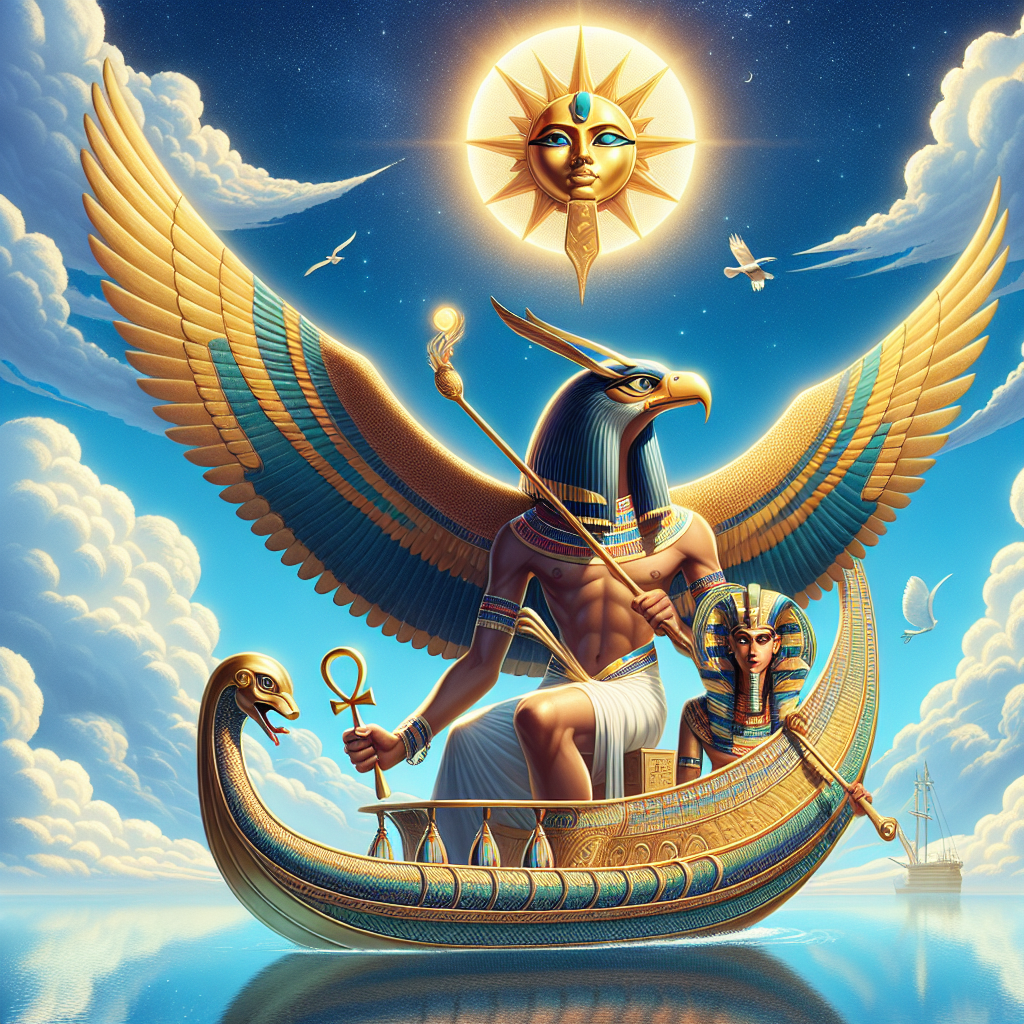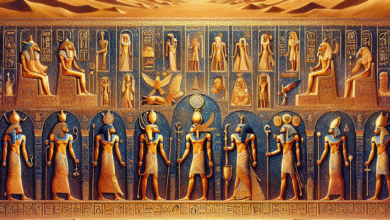In ancient Egyptian mythology, few deities held as much significance as Ra, the Sun God. Revered as the embodiment of the sun, Ra represented creation, power, and light. His journey across the sky not only explained the natural cycles of day and night but also served as a spiritual metaphor for life, death, and rebirth. This article explores the attributes of Ra, his mythological significance, and the profound impact he had on ancient Egyptian culture.
The Mythological Background of Ra
Ra, sometimes spelled as “Re,” was depicted as a man with the head of a falcon crowned with a solar disk and an ouroboros (a serpent eating its tail). This striking imagery encapsulated his dual nature as both a king of the gods and a life-giving entity.
According to Egyptian mythology, Ra was born each day from the primordial waters of Nun, the chaos that existed before creation. This birth was celebrated by the Egyptians, signifying renewal and the promise of life. Ra was not only the sun but also one of the nine deities in the Ennead of Heliopolis, where he was often seen as the father of Osiris, Isis, Set, and Nephthys.
The Daily Journey Across the Sky
Ra’s most significant mythological role was his journey across the sky, symbolizing the sun’s rising and setting. Each day, Ra sailed through the sky on a divine solar barque, known as the Mandjet (or Morning Barque) during the day and Mesektet (or Evening Barque) during the night.
-
The Dawn: At dawn, Ra emerged from the eastern horizon, signifying the birth of a new day. This emergence was celebrated in temples through rituals and hymns, emphasizing hope and renewal.
-
Noon: As Ra traveled to the zenith of the sky, he reached his full power at noon. This moment was symbolic of light, governance, and truth, with Ra often associated with the concepts of Ma’at (truth, balance, and cosmic order). Egyptians believed that during this peak hour, Ra’s presence was felt most strongly, inspiring pharaohs to look to him for guidance and authority.
-
The Dusk: As the sun began its descent, Ra’s journey reflected the inevitability of decline and death. This transition was embodied in the myth of his nightly voyage through the underworld, a realm filled with chaos and darkness.
The Nighttime Voyage and the Underworld
The most fascinating aspect of Ra’s cycle was his nighttime journey through the underworld, known as the Duat. As night fell, Ra would enter his barque for a perilous journey fraught with challenges from various monsters, such as the serpent Apep (or Apophis). Apep represented evil and chaos, and his conflict with Ra symbolized the eternal struggle between order and disorder.
To combat Apep, Ra was supported by various deities, including the goddess Ma’at, who represented cosmic order, and Sekhmet, the lioness goddess of war. Together, they ensured that Ra would safely navigate the dark waters of the Duat, eventually overcoming the forces of chaos and emerging victorious with the dawn.
This nightly voyage was not merely a myth; it served as a fundamental worldview for the ancient Egyptians. It represented the cyclical nature of life, death, and rebirth, providing comfort in the face of mortality. Just as Ra resurrected each morning, Egyptians believed in the possibility of life after death, symbolized through funerary practices and the significance of the afterlife.
Ra in Egyptian Society
Ra’s dominance in Egyptian mythology extended beyond the cycles of day and night. He was also viewed as the creator god, the source of all life and fertility. Pharaohs considered themselves the earthly embodiment of Ra, often referring to themselves as “sons of Ra,” reflecting their divine right to rule.
Temples dedicated to Ra, particularly the Temple of the Sun at Heliopolis and The Karnak Temple Complex, served as important religious centers. Rituals, offerings, and festivals celebrated his power, and priests dedicated their lives to ensuring his favor. These practices reinforced the pharaoh’s authority and the connection between the divine and the earthly realms.
In artistic representations, Ra was often depicted in various forms. The beetle (scarab) was a significant symbol, as it represented transformation and regeneration. The Egyptians believed the scarab rolled the sun across the sky, analogous to Ra’s daily journey.
Ra’s Legacy
With the passage of time and the evolution of Egyptian theology, Ra’s supremacy began to wane. He assimilated with other deities, particularly Amon, to become Amon-Ra, a supreme god who merged the sun’s attributes with the creator god. This merger reflects the Egyptians’ ability to adapt their beliefs while retaining the fundamental principles that governed their understanding of the cosmos.
The decline of ancient Egypt’s polytheistic practices, along with the rise of Christianity and Islam, led to the eventual overshadowing of Ra’s prominence. However, his influence remains embedded in modern cultural references, art, and literature, symbolizing the enduring power of light over darkness.
Conclusion
Ra, the Sun God, embodies the essence of life, rebirth, and the eternal struggle against chaos. His daily journey across the sky served as a profound metaphor for existence and the cycle of life and death. Although the worship of Ra may have faded with time, his legacy continues to illuminate the human experience, reminding us of the universal need for understanding our world and the enduring fight for order in our lives. As ancient Egyptians celebrated his life-giving power, the essence of Ra still resonates, inspiring generations to seek light in the darkness.





